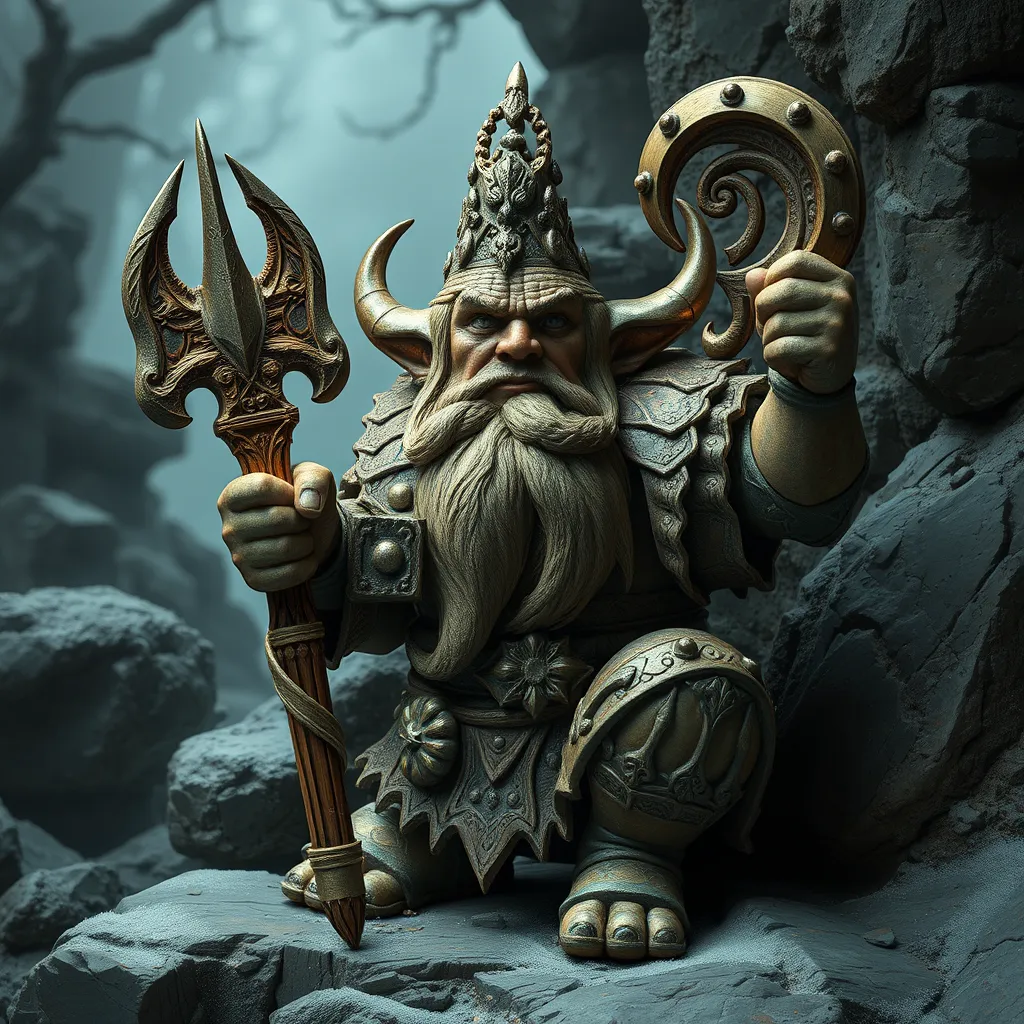The Dwarven Arts: Examining the Craftsmanship and Artistic Expressions of Dwarf Culture
I. Introduction to Dwarven Culture
Dwarven culture is a rich tapestry woven from centuries of tradition, history, and artistry. Dwarves, known for their resilience and craftsmanship, have cultivated a unique heritage that intertwines their societal values with their artistic expressions. This article aims to explore the significance of craftsmanship in Dwarven society, shedding light on how their artistry reflects their identity and values.
II. The Historical Context of Dwarven Craftsmanship
The roots of Dwarven arts and crafts can be traced back to their ancient origins, where practicality met creativity. Dwarves, often living in mountainous regions, developed their artistic skills as a means of survival and expression. Their environment significantly influenced their work, leading to the creation of durable and beautiful items that showcased their connection to nature.
Craftsmanship is deeply embedded in Dwarven mythology and legends. Tales of legendary artisans, who forged powerful artifacts or crafted stunning structures, are prevalent in Dwarven lore. These stories not only celebrate the skills of individual craftsmen but also highlight the cultural importance of artistic endeavors.
III. Key Materials in Dwarven Artistry
Central to Dwarven craftsmanship are the materials they use, each selected for its unique properties and significance.
- Metals: Dwarves are renowned for their mastery over metals such as gold, silver, and the legendary mithril. Each metal possesses qualities that make it ideal for specific purposes, from the creation of weapons to intricate jewelry.
- Stone: Dwarven artisans often utilize granite and marble, carving them into magnificent sculptures and architectural marvels. Gemstones, too, play a vital role, often embedded within stonework as a testament to their skill.
- Wood: While not as commonly associated with Dwarven crafts, wood is used uniquely in carvings and furniture, showcasing a blend of practicality and artistry.
IV. Iconic Dwarven Craft Techniques
Several techniques stand out in the Dwarven artistic arsenal, each representing a facet of their cultural identity.
- Blacksmithing: Considered the heart of Dwarven craftsmanship, blacksmithing combines strength and precision. Dwarven blacksmiths are celebrated for their ability to forge weapons and tools that are not only functional but also works of art.
- Stonework: Dwarves excel in stone carving, creating intricate designs that adorn their homes and public spaces. Their mastery in construction techniques has resulted in some of the most enduring structures in history.
- Jewelry-making: Dwarven jewelers are known for their intricate designs and symbolic representations. Each piece tells a story, often reflecting the wearer’s heritage or achievements.
V. Artistic Expressions in Dwarven Culture
Dwarven artistic expressions extend beyond physical crafts, encompassing various forms of performance and storytelling.
- Painting and Sculpture: Dwarven art often features themes of nature, ancestry, and mythology. Common motifs include mountain landscapes, legendary battles, and ancestral figures, reflecting their reverence for history.
- Music and Dance: Music plays a crucial role in Dwarven celebrations. Traditional instruments, such as the lute and drums, accompany dances that tell stories of their past, enhancing communal bonds.
- Storytelling: Oral traditions are vital in preserving Dwarven history and culture. Elders pass down stories of creation, heroism, and craftsmanship, often accompanied by songs and dramatic reenactments.
VI. The Role of Guilds and Apprenticeships
Dwarven craftsmanship is supported by a structured system of guilds, which play an essential role in maintaining high standards and preserving traditional techniques.
- Structure of Dwarven guilds: Guilds are organized around specific crafts, ensuring that knowledge and skills are passed down through generations.
- Importance of mentorship: Apprenticeships are a cornerstone of Dwarven culture, where young artisans learn from seasoned masters, fostering a deep respect for their craft.
- Notable artisans: Throughout history, various Dwarven artisans have gained fame for their contributions, from legendary blacksmiths to renowned jewelers, leaving a lasting legacy in their fields.
VII. Contemporary Dwarven Arts
In modern times, Dwarven arts have evolved, reflecting changes in society while maintaining traditional roots.
- Evolution of Dwarven arts: Contemporary Dwarven artisans blend age-old techniques with modern aesthetics, creating pieces that resonate with both traditional and modern audiences.
- Fusion of styles: Many Dwarven artists experiment with mixed media, incorporating elements from other cultures while staying true to their Dwarven identity.
- Global influence: Dwarven craftsmanship has gained recognition beyond their mountains, influencing artisans worldwide and fostering collaborations across cultures.
VIII. Conclusion
The legacy of Dwarven arts is enduring, reflecting their rich heritage and the significance of craftsmanship in their society. As custodians of their culture, Dwarven artisans play a crucial role in preserving these traditions for future generations. The impact of Dwarven artistic expressions extends beyond their own communities, enriching the broader cultural landscape and inspiring admiration and respect for their unique contributions.




